1813 Holey Dollar struck from a Charles IIII, 1798 Mexico Mint Spanish Silver Dollar.
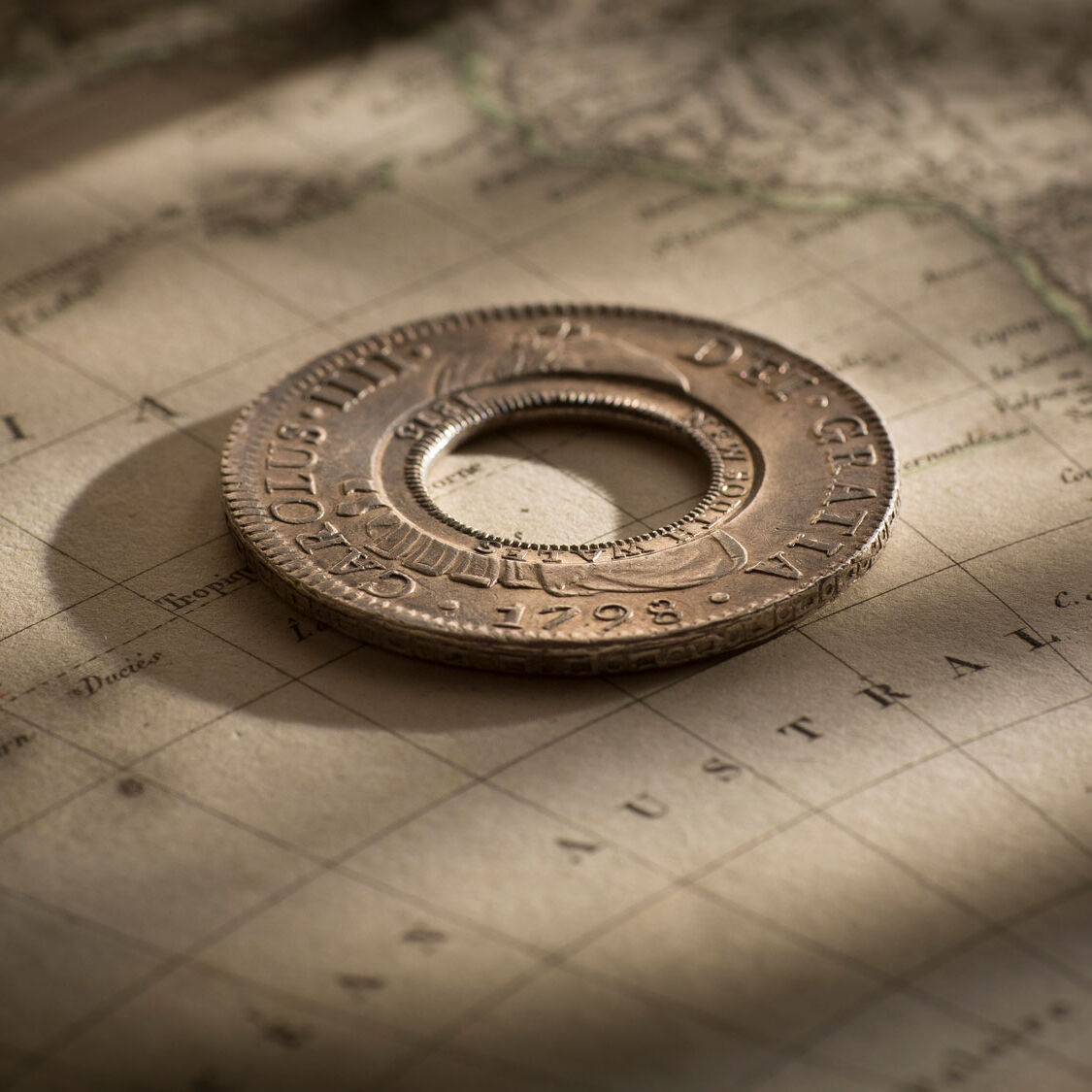
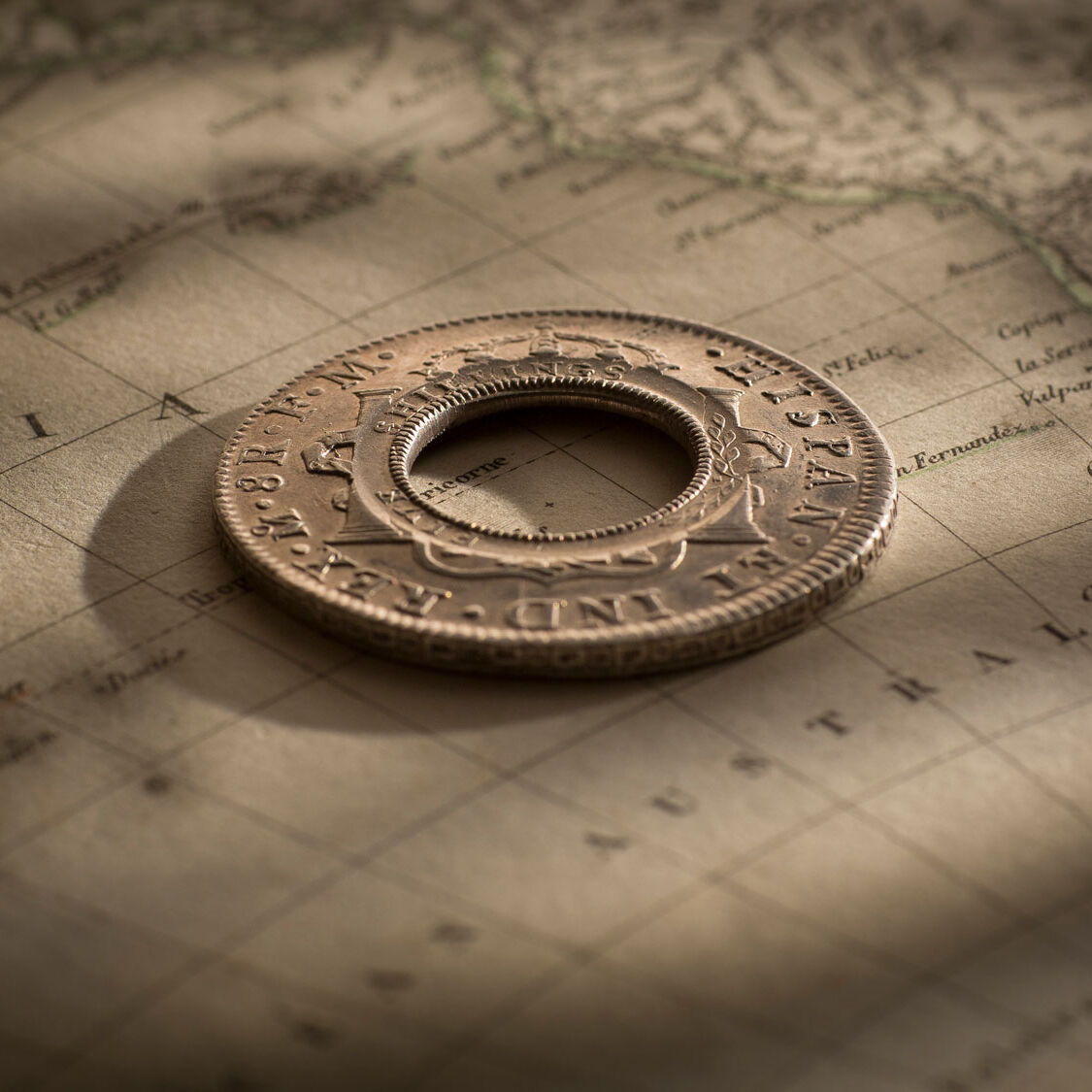
It is a statement of fact that most Holey Dollars are today found well worn. No quality parameters were set on Macquarie’s shipment of 40,000 silver dollars. This Holey Dollar is the exception.
The original 1798 Spanish Silver Dollar from which this Holey Dollar was created is graded in the absolute premium quality levels of about Uncirculated indicating that it underwent minimal circulation before the hole was cut into it in 1813. The coin has original silver lustre and light toning and is very attractive. And this is a point worth pursuing.
The earlier the date of the silver dollar, the greater the potential for circulation before the nation’s first mint-master, William Henshall, got his hands on it. In the case of this Holey Dollar the silver dollar had 15 years of potential circulation before it was holed.
Its state of preservation is therefore remarkable.
The extent of usage of the Holey Dollar after it was released into circulation is evidenced by the wear to the counter-stamps, the over-stamping around the inner circular edge … New South Wales, 1813 and Five Shillings.
The counter-stamps of this Holey Dollar are also graded in the premium quality levels of about Uncirculated and retain their original silver lustre.
Created in 1813 by mint-master William Henshall, circulated in the colony for 16 years when it was eventually demonetised with minimal usage in between.
That this coin has survived in this state is simply a miracle.
The Holey Dollar is one of Australia’s most desirable coins. Talk to those fortunate enough to own one, either private collectors or institutions such as Macquarie Bank, National Museum of Australia and the Mitchell Library, and they will tell you that the Holey Dollar is viewed as the jewel in their collection. And that statement is made irrespective of the quality level.
The coin is rare. And the coin is steeped in history.
A Holey Dollar can resemble a washer if it is well circulated. Or it can reach the heady quality heights of this coin. No matter the quality, the pleasure of ownership is immeasurable.
Once you move from the well circulated Fine and Good Fine quality levels up to the Extremely Fine and Good Extremely Fine echelons, the differences in quality are marked and noticeable and clearly visible to the naked eye. It is the detail in the hair, the robes and the overall state of the fields as evidenced in this Holey Dollar.
The status of the Holey Dollar as Australia’s first coin ensures that it will never be forgotten and, as time passes, its historical value can only increase.
No other coin has had so many books written about it.
The Holey Dollar is a coin that is held in the utmost respect. It is history. And yet it is refreshingly current. The ingenuity of Governor Lachlan Macquarie in creating our first coin is reflected in the naming of the Macquarie Bank and the bank’s ultimate adoption of the Holey Dollar as its logo.
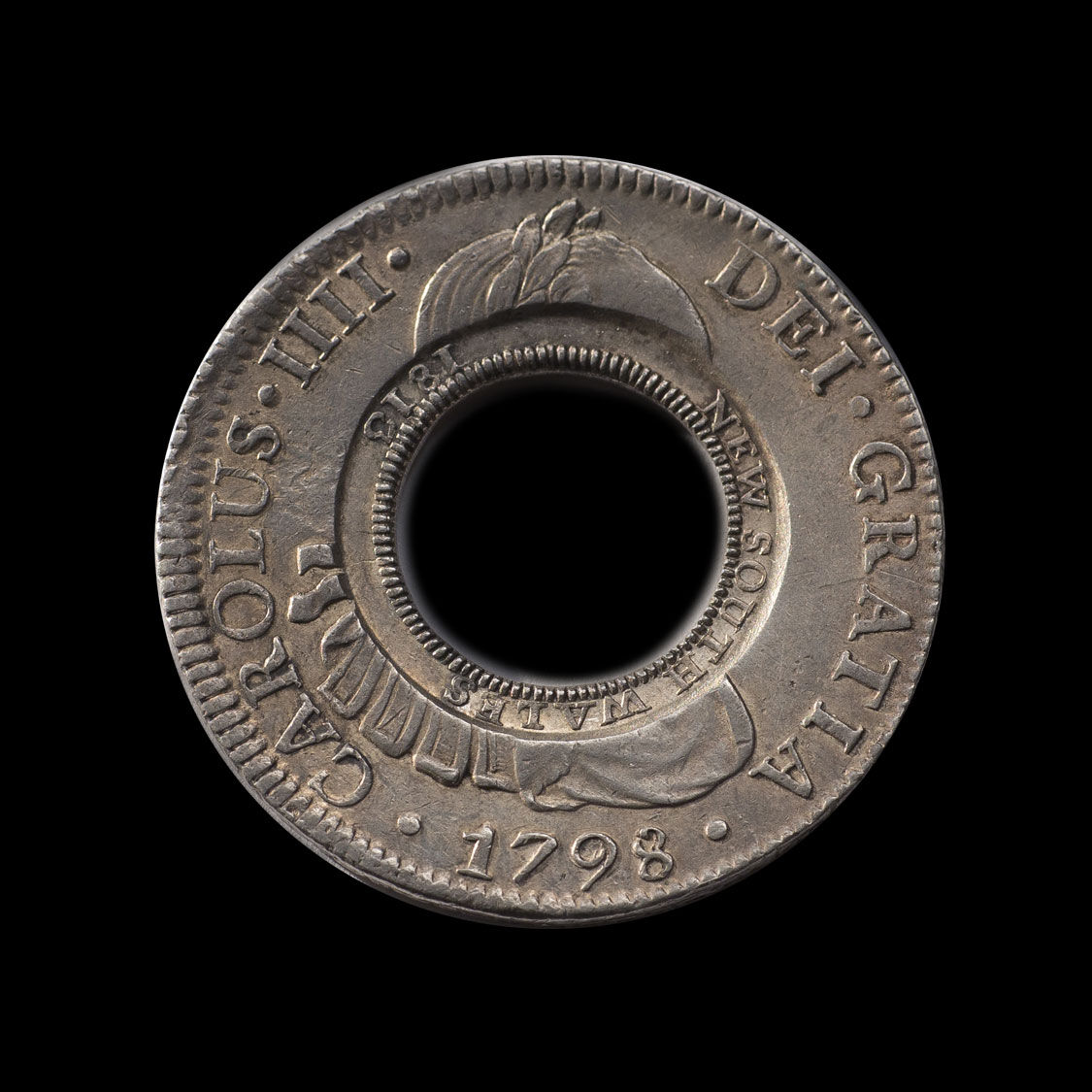
Notice the detail in the hair and the robes. Also note the strength of the edges and the date 1798. This Holey Dollar is nicely toned and has original silver lustre.
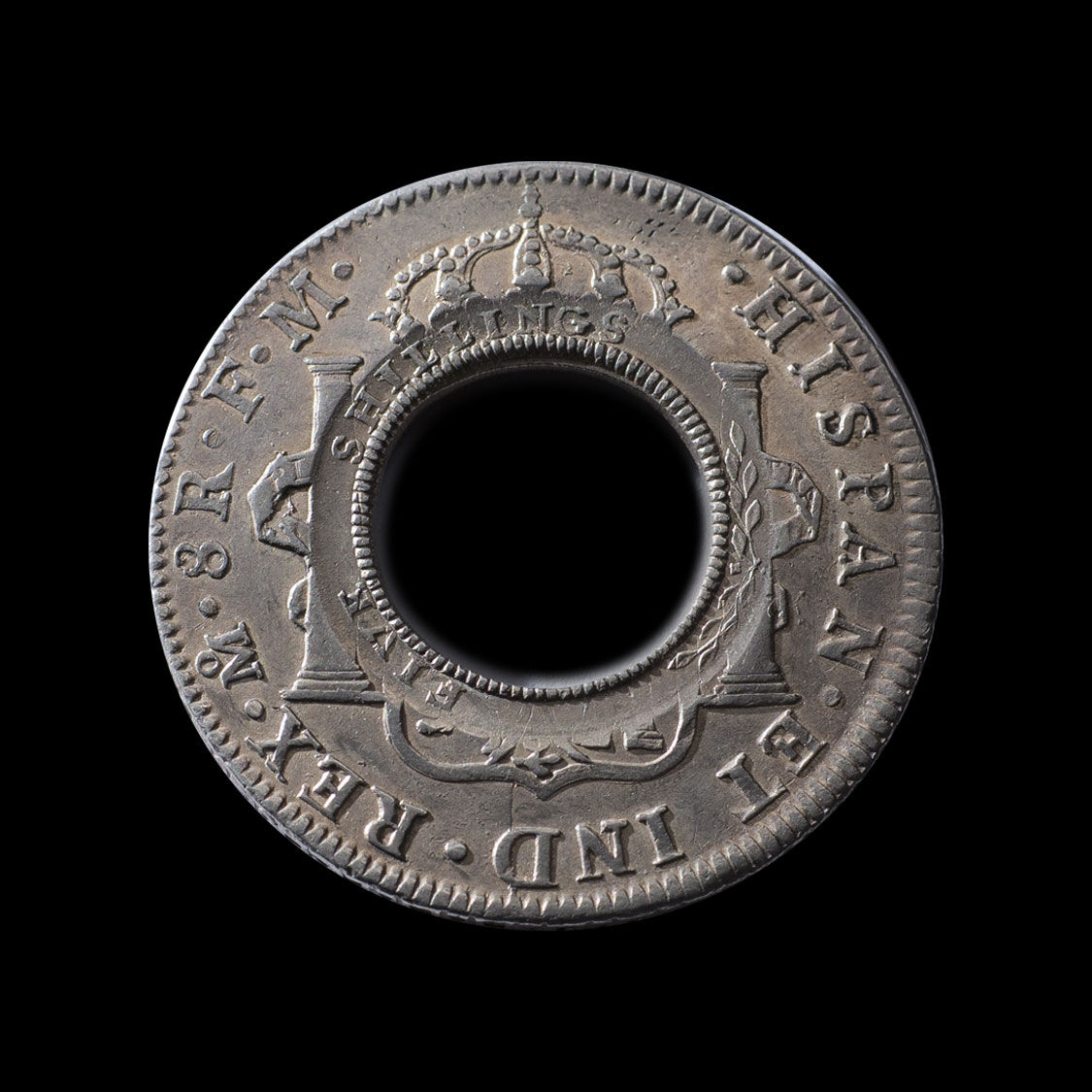
The counter stamps are a supreme quality Good Extremely Fine on both obverse and reverse and also have original silver lustre.
A provenance of note.
This Holey Dollar coin has changed hands a few times over the last century and always into esteemed collector hands … S. A. H. Whetmore, Ray Jewell, Philip Spalding, to name but three.
The provenance is detailed below.
- Glendinings London March 1918, in the sale of the W. B. Thorpe Collection
- Glendinings London April 1961, in the sale of S. A. H. Whetmore Collection
- Foley Collection (USA)
- Ray Jewell (Australia) by private treaty
- Philip Spalding (Australia) by private treaty
Renowned British collectors. Revered US collectors. And then eventually back to where it all began in Australia.
That the coin has attracted sustained buyer interest right across the globe for more than a century, in London and New York, reflects the international appeal of the Holey Dollar.
And the resounding appeal of this particular coin.
This Holey Dollar is featured on page xvi of the Philip Spalding book, The World of the Holey Dollar: a compliment in itself. Published in 1973 this book is still to this day a major reference on the Holey Dollar.
A copy of Spalding’s book will be provided with this coin.
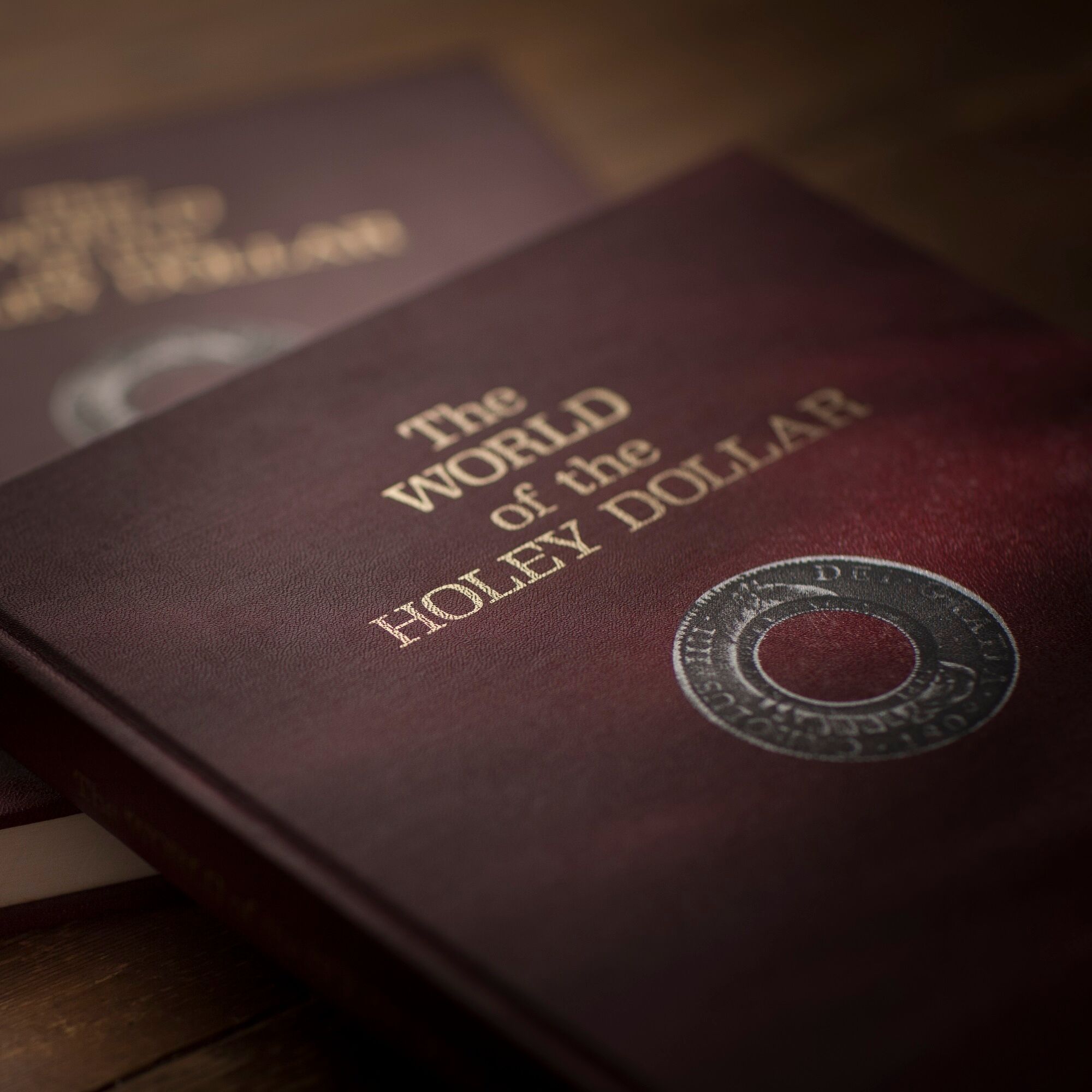
© Copyright: Coinworks
